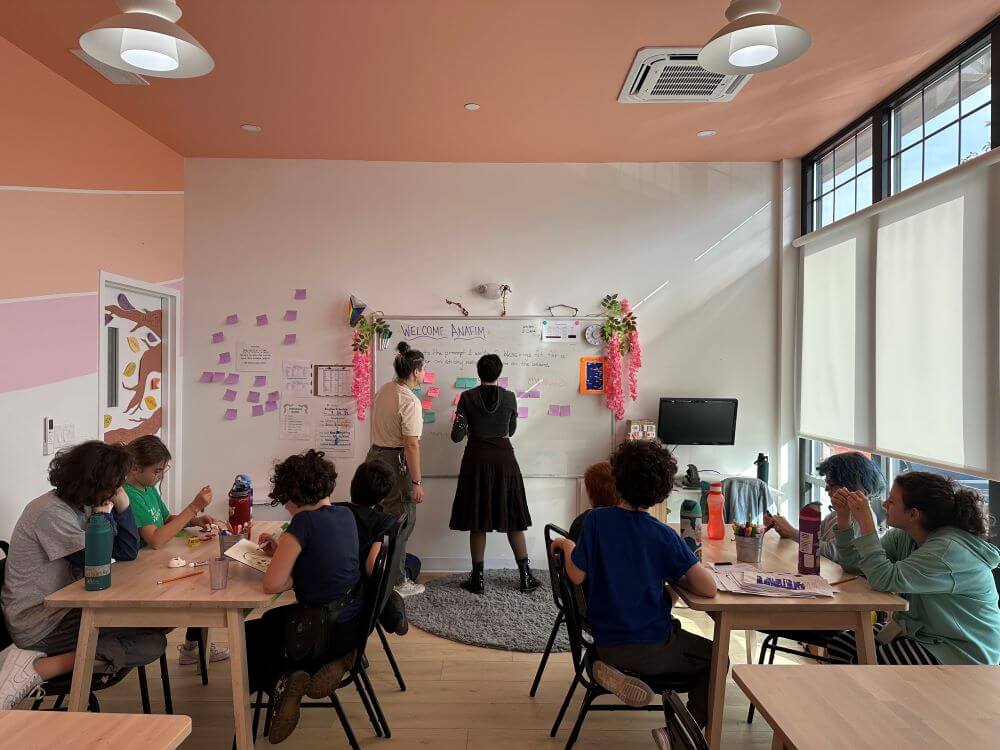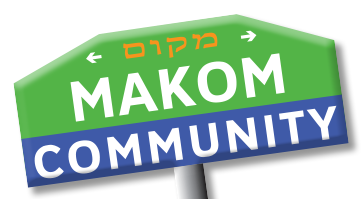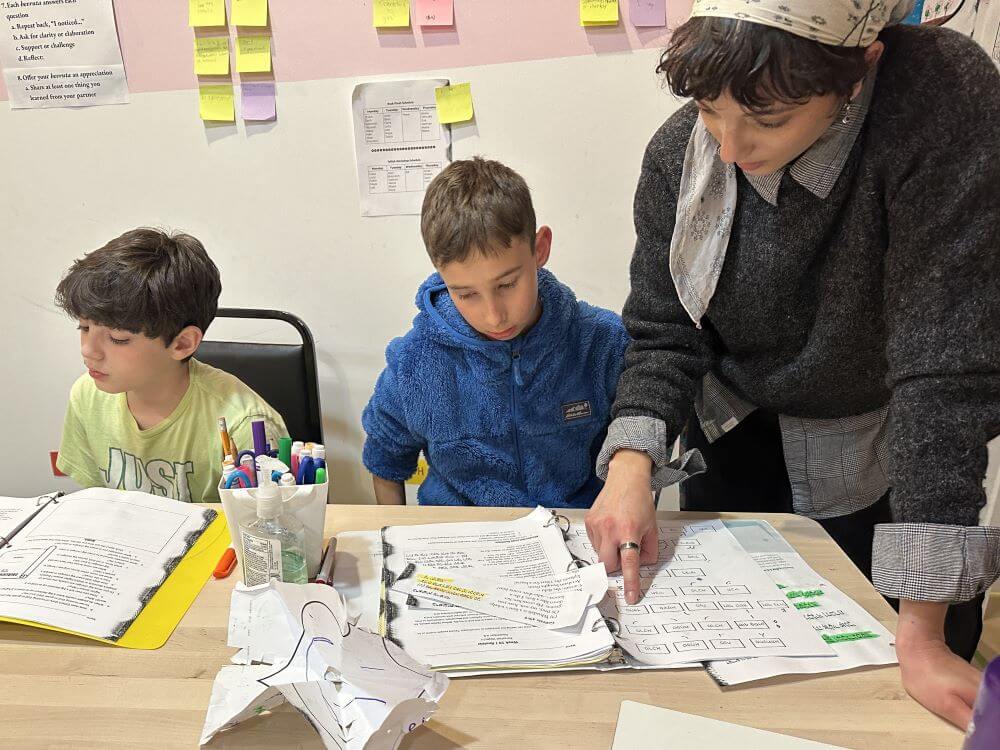
When I was asked to teach Torah trope to the Anafim (5th-7th grade) cohort this year, I was more nervous than I’d like to admit. As a Jewish educator who has never had a BMitzvah, I figured that I was the least qualified individual to take on this responsibility. To play such an important role in preparing kids for their BMitzvah studies felt like a challenge I needed to rise to, especially considering I was unfamiliar with Torah trope at the beginning of this academic year. That said, the experience of prioritizing my personal studies so that I could set my learners up for success and the impact this had on them was affirming in more ways than I could have ever imagined.
We started our Torah trope crash course with an introduction to the vastness and history of Torah trope. The use of trope is first mentioned in the TaNaKh, when Ezra facilitates the first public Torah reading in the book of Nehemiah. Trope melodies vary globally from region to region based on the cultures and traditions of the people there. I explained that we would study Ashkenazi Torah trope which is most often used by Jews of Eastern Europe and German descent. The learners were very intrigued by just how many ways there are to sing trope, had a lot of questions about this, and were excited to get started!
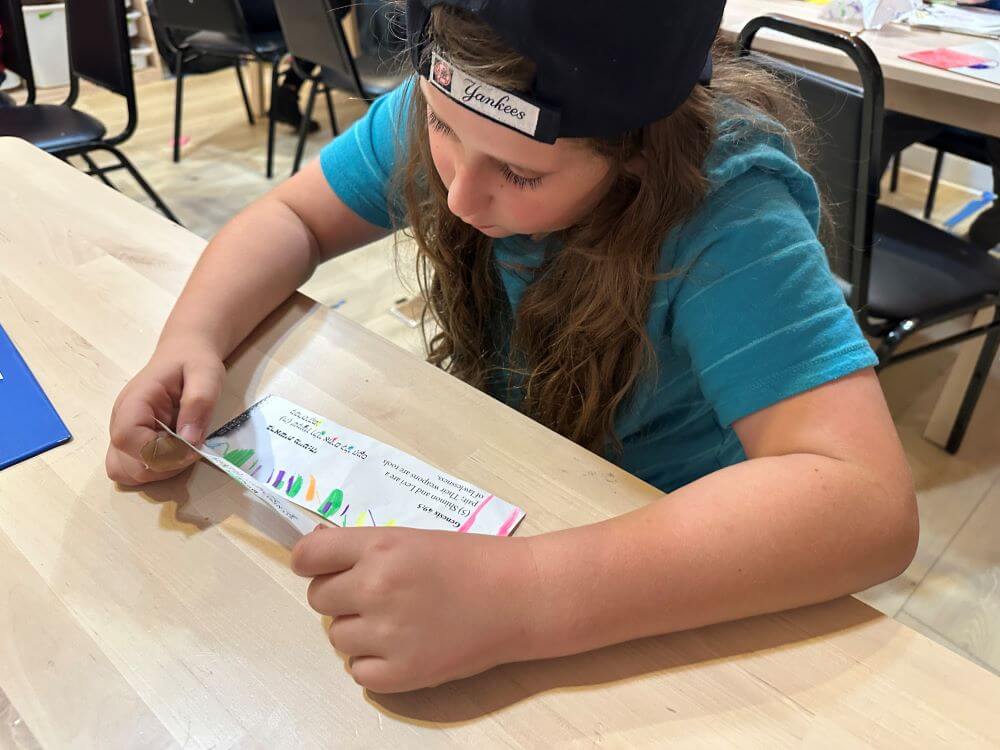
Each day for two weeks, we introduced the kids to a new trope phrase and reviewed it until they were comfortable. Afterward, I would ask for volunteers to recite the phrase of the day for the class. For whatever reason, this period of intense trope study gave learners who are often hesitant the confidence to present their skills to the class the courage to sing for everyone. This is the magic of Torah trope, you see. It has the potential to comfort and energize learners who might otherwise feel discouraged by the idea of building a relationship with Hebrew and the words of Torah. Learning this together also strengthened our sense of classroom community. Learners volunteered to recite with their peers so that they felt more comfortable doing so on their own later. Others helped their peers identify trope symbols as they read through their Torah reading, and this in turn strengthened their own skills.
Moreover, the eagerness to read Torah at the upcoming Torah service at the Makom Housewarming in January was practically unanimous. In the past, I’ve noticed that learners need a bit more encouragement to give Torah reading a try, especially if they are still years away from their BMitzvah. However, this year the kids were not only jumping at the chance to read for the community, but most chose several verses to read instead of just one.
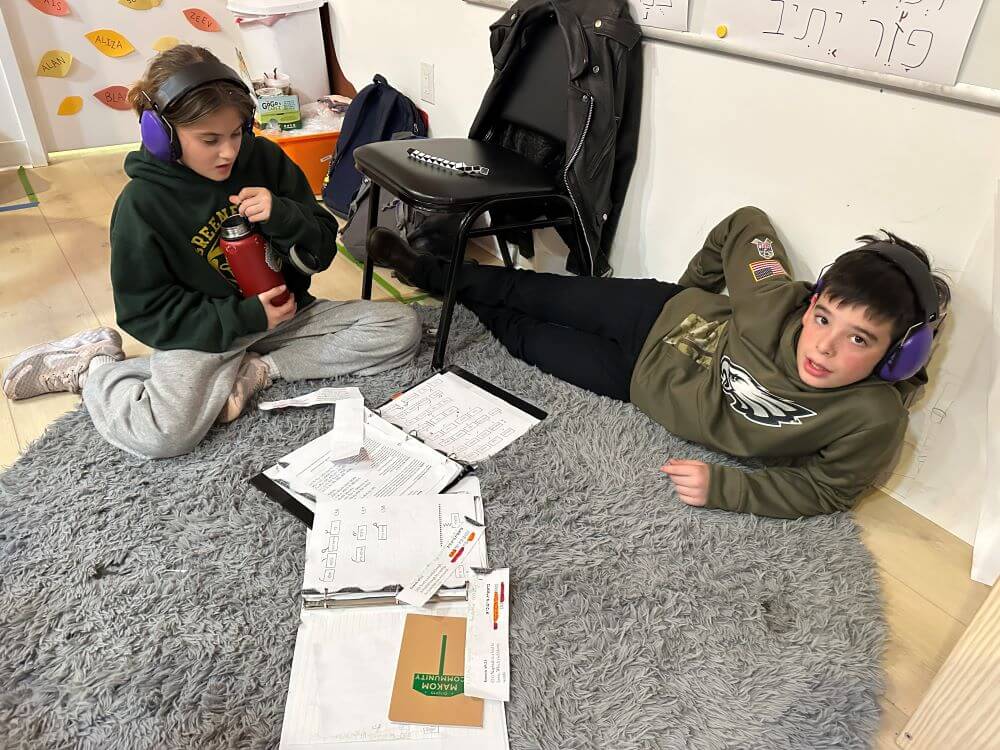
In the end, taking on the daunting task of teaching the Anafim Torah trope strengthened my relationship to Torah and the tradition of reading it as well. Throughout those two weeks, I marveled at the impact this crash course had on my learners’ confidence as well as my own. Learning trope enabled us to feel more grounded in our Jewishness. We were amazed by how thrilling it was to feel so connected to the global Jewish community now and in the past. Who knew that acquiring this skill would have such an effect on us and our class? This experience taught me that the cantillation of Torah is more than just a skill or tradition, it is a practice that nourishes and invigorates our connection with community, ourselves, and Judaism as a whole.
